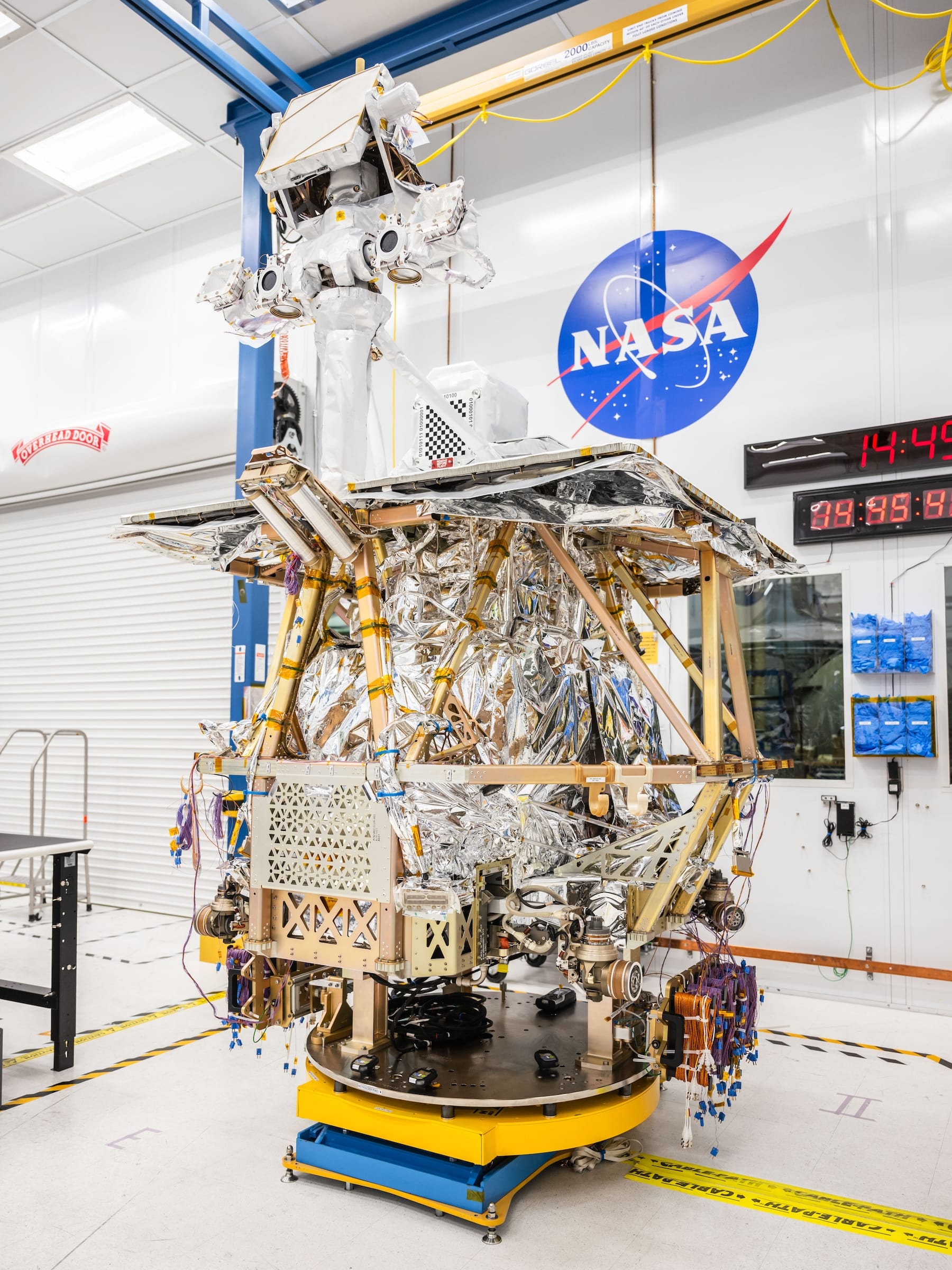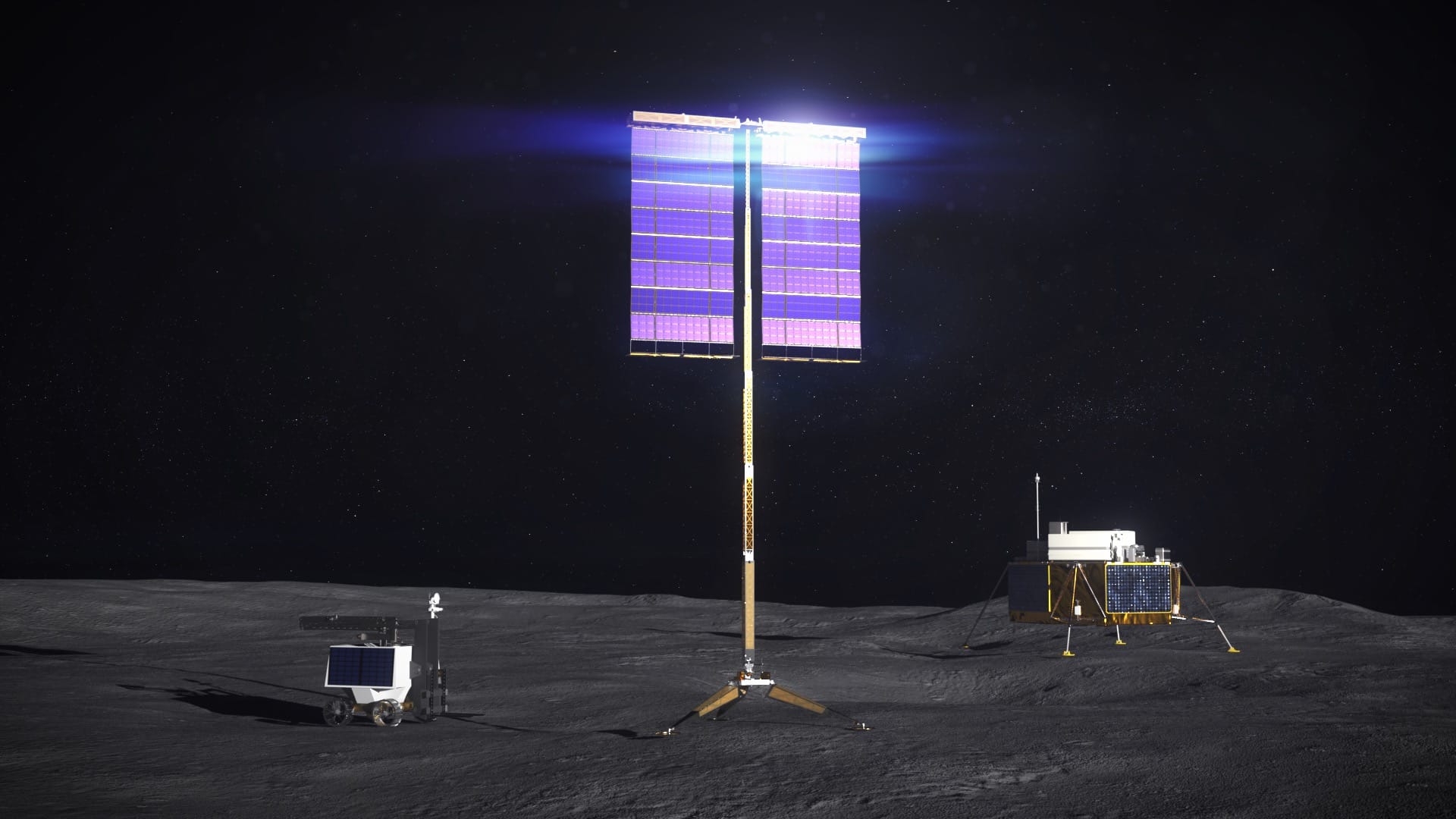Moon Monday #173: An array of NASA Artemis & CLPS updates, and more
I’m delighted to share that The Orbital Index is continuing being a Moon Monday sponsor for the third year in a row! 🚀
Their crisp, technical archive of weekly space updates over the last five years is genuinely worth perusing, and searching within, because Andrew, Ben and Sarajane ensure it’s well curated and broad in perspectives—traits which partly inspired me to start Moon Monday in the first place.
Lastly, thank you everyone for your wishes; I’ve settled into Bengaluru. Welcome back to an action-packed edition of the world’s only newsletter dedicated to all things lunar, globally. On that note, I'm also glad to announce that Moon Monday now has more than 7,000 subscribers! 🌏🌙
VIPER, the lunar water hunter, coming together

NASA’s upcoming VIPER rover, part of the agency’s CLPS program designed to study water ice on the Moon’s south pole, is progressing well in its assembly, with the latest hardware addition being its tall mast. The multipurpose mast hosts a pair of pan-able, steerable panoramic stereo navigation cameras, two LED headlights, and gimballing communications antennas which can maintain their orientation even as VIPER moves in various directions.
VIPER intends to explore areas in and around permanently shadowed regions for over four months to unravel the nature of lunar water ice deposits, assess their resource potential, and help determine how accessible they really are. This will help NASA plan crewed Artemis missions. While VIPER was nominally being planned for a November 2024 launch onboard Astrobotic’s Griffin lander, the company’s failed lunar mission last month might induce delays, and very likely more tests and associated costs/funds.
Also see: Astrobotic to fly its novel CubeRover on the Griffin lander after all
ispace doubles down on farside Moon mission

ispace Japan is taking a bridge loan of $45 million from the Sumitomo Mitsui Banking Corporation to majorly continue work on Draper’s first CLPS Moon mission targeting a 2026 launch, wherein ispace’s US subsidiary is providing the APEX lander to touchdown on the Moon’s farside. Relatedly, Jeff Foust reported last month that the publicly traded company raised $53.5 million through a stock sale, $47 million of which will be used for the Draper-led mission. At 300 kilograms, APEX has 10 times more payload capacity than the compact Series 1 lander design, which ispace Japan flew on the company’s Mission 1 (M1) last year, and will do so again this year for M2.
In October 2023, ispace announced being awarded a $80 million Japanese government grant to develop and launch a lunar lander by 2027, which can carry more than 100 kilograms of payload to the Moon’s surface. Some amount of the bridge loan will also go towards the development of this mission.
To meet the Draper-led CLPS mission’s science goals, APEX will also deploy two Blue-Canyon-provided lunar satellites to relay communications between the lander and Earth. Post this primary mission, ispace will move the satellites into a polar orbit to provide commercial communications between Earth and hardware on the Moon’s south pole for several years.
As a tangent, recall that each of these satellite will also carry a NASA-grant-funded payload from Rhea Space called the Jervis Autonomy Module (JAM), which will let the satellites autonomously determine their orbits by imaging and identifying multiple celestial objects. As such, they won’t need to rely on terrestrial ground stations to know their positions. Rhea Space says they’re also adapting JAM to capture high-resolution images of the Moon’s surface for mapping purposes.
Many thanks to The Orbital Index, Gurbir Singh and Arun Raghavan for sponsoring this week’s Moon Monday. If you love this community resource too, join them!
More Artemis updates

- NASA is further funding Ceres Robotics to develop their 50-plus-kilowatt vertical solar arrays for potential deployment on maximally sunlit sites on the Moon’s south pole in support of future crewed Artemis missions. That’s a minimum five fold increase in power than the 10-kilowatt vertical arrays for which NASA made developmental awards to Astrobotic, Honeybee Robotics, and Lockheed Martin. Ceres says their 23.5-meter tall arrays called C-Towers—being prototyped in partnership with Voyager Space—can auto-deploy, retract for relocation, track the Sun, stay stable on steep terrain, and be resistant to abrasive lunar dust all while minimizing mass and stowed volume for easing their launch and delivery to Luna.
- NASA published a source selection statement on April 9, providing details on how the agency selected teams led by Intuitive Machines, Lunar Outpost, and Venturi Astrolab to mature their respective designs for a versatile Lunar Terrain Vehicle (LTV). NASA intends to use this unpressurized rover on a firm, fixed price service basis across Artemis missions starting with Artemis V end of decade. The selection statement reveals that NASA ruled out proposals from Leidos, Astrobotic, and Blue Origin. Jeff Foust highlights more such notable points from the statement but what stood out to me is that Astrolab proposed delivering their LTV earlier than NASA asked for by flying aboard the SpaceX Starship lander that will carry crew for Artemis IV.
- Eric Berger reports that NASA is privately considering modifying the upcoming Artemis III crewed Moon landing mission to an Earth or lunar orbiting one in order to gain confidence that the Orion spacecraft and Lunar Starship can safely dock with each other, and then to test out the latter’s habitability systems. If NASA decides to go ahead with this or another such non-lunar-landing plan, the mission might be called Artemis IIS in Apple style.
- In the week of April 15, Switzerland, Sweden, and Slovenia signed the US-led Artemis Accords for cooperative lunar exploration, bringing the total number of nation-signees to 39 globally and 17 in Europe.
More Moon
- Continuing to defy JAXA’s own expectations, the solar-powered SLIM lander survived the frigid lunar night for the third time and reestablished contact with Earth on April 23. SLIM has faced some hardware deterioration, which combined with hot temperatures around the near-equatorial-noon have sadly meant that JAXA has been unable to operate SLIM (other than limited use of the optical imager) to specifically continue some of its leftover science goals.
- As part of the ongoing five-year, CAD $150 million lunar exploration program called LEAP, Canada is investing only CAD $8.6 million for the fiscal year 2024-25. The creation of a National Space Council as part of the budget announcement is welcome news though.
- Laser Zentrum Hannover and TU Berlin, with €4.75 million in funding from the German Space Agency, aim to demonstrate laser-melted 3D printing on the Moon on Astrobotic’s third lunar mission, which aims for a south polar touchdown in 2026. Relatedly, NASA is awarding Astrobotic with $34.6 million to demonstrate power transmission on the Moon, which seems to be planned to take place as part of the same mission hosting the 3D printing demo.
- Andrew Jones reports that on April 24, Nicaragua became the tenth country to join the upcoming China-led long-term scientific base on the Moon’s south pole called the International Lunar Research Station (ILRS). Also, Ling Xin reports that Ethiopia’s Space Science and Geospatial Institute (SSGI) and the Kenya Advanced Institute of Science and Technology (KAIST) signed intents to join ILRS as organizations. Per the Global Times, the Arab Union for Astronomy and Space Sciences seems to have joined ILRS as an organization as well.
